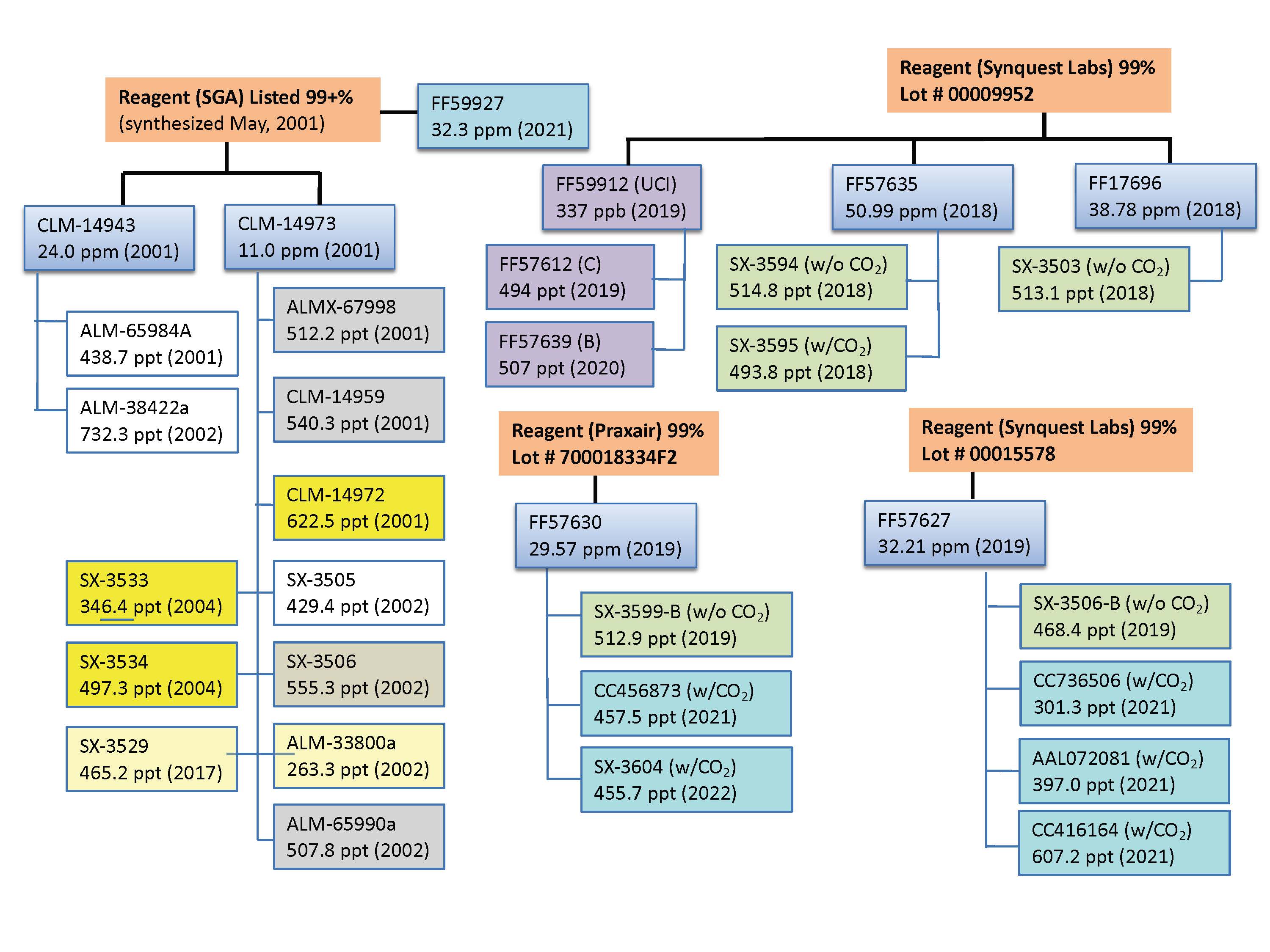Linking Atmospheric Data to High-quality Gas Standards – a 25+ Year Perspective
B. Hall1, A. Crotwell2,1, D. Kitzis2,1, S.A. Montzka1, I. Vimont2,1, T.K. Mefford2,1 and S. Clingan2
1NOAA Global Monitoring Laboratory (GML), Boulder, CO 80305; 303-497-7011, E-mail: Bradley.Hall@noaa.gov
2Cooperative Institute for Research in Environmental Sciences (CIRES), University of Colorado, Boulder, CO 80309
A key component of GML’s research involves the ability to prepare in-house gas standards, both to establish calibration scales, and for use as working standards for various measurement programs. The ability to link measurements made by different instruments across a variety of spatial and temporal scales is one of the strengths of GML’s measurement programs, and provides the basis for our role as a WMO Global Atmospheric Watch (GAW) Central Calibration Laboratory. Having the ability to make custom gas standards also gives us the ability to efficiently test for artifacts, such as co-elution in gas chromatography, and matrix effects in other analytical techniques. Over the last 25+ years, we have utilized and developed various methods to prepare gas standards using gravimetric and manometric methods, which tie many atmospheric measurements to common well-defined scales. Along the way, we have made improvements in the laboratory, in analytical systems, in data management, and in the preparation of natural air standards in response to new measurement challenges. This presentation will highlight some of the successes and challenges over the last few decades.
Figure 1. History of carbonyl sulfide standards prepared since 2001.

